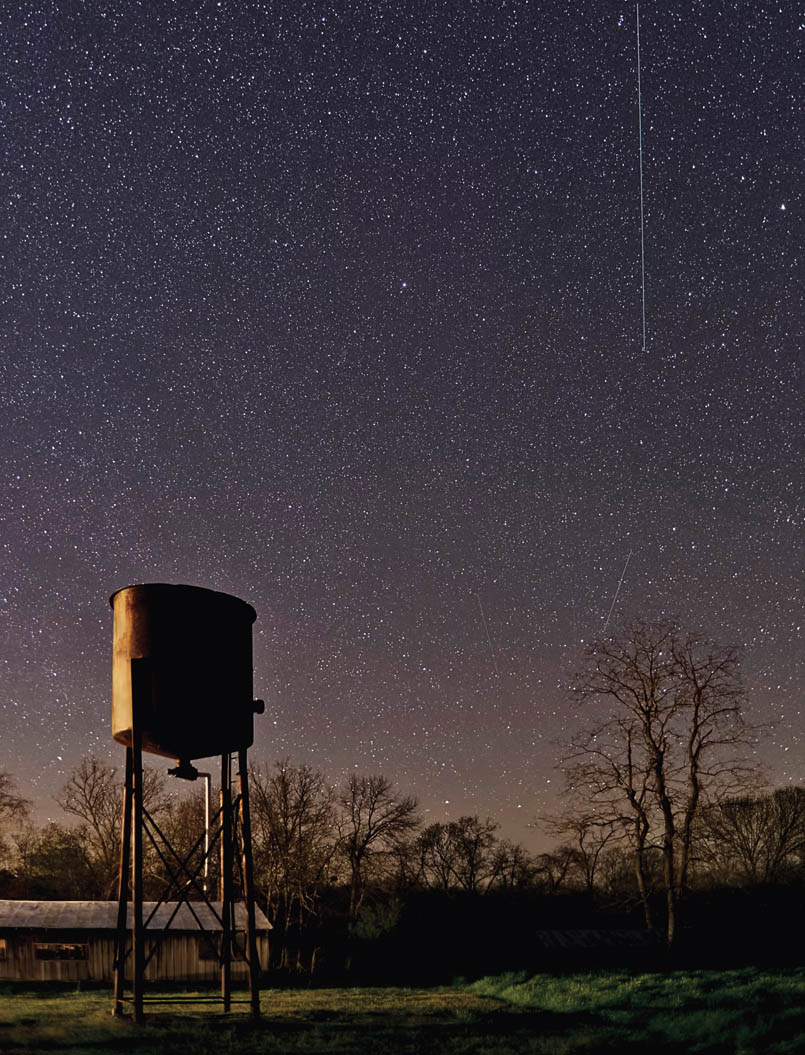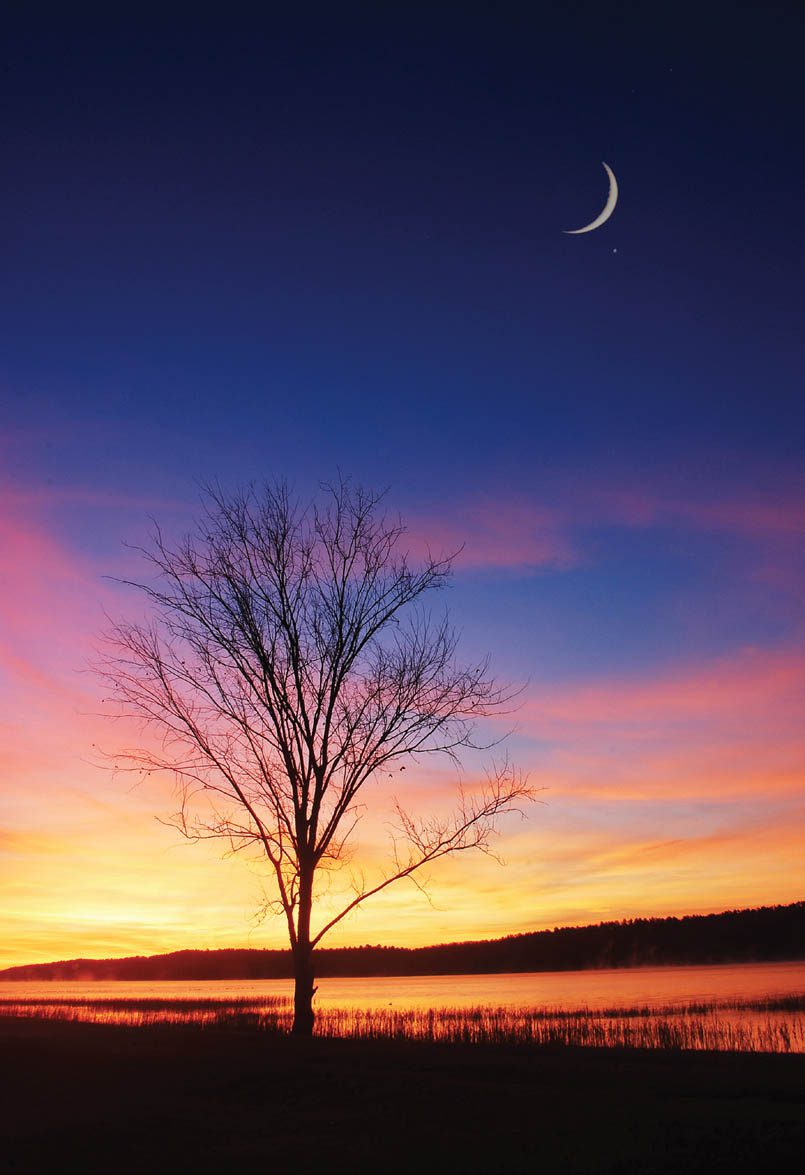21 Dec 2019 Sky watching opportunities in 2020

It is a brand new year and it is time to make plans for observing the night sky if you are an amateur astronomer like me. I love watching and photographing the heavenly sky. I am planning my schedule for the astronomical events I want to observe and exploring the best places to be in to capture an image of the best events in 2020.
There are several excellent spots in the 501 to catch glimpses of the shows going on in the firmaments. Some of my favorite spots to watch the sky are Petit Jean State Park, Brock Creek in the Ozark National Forest, rural areas north of Clinton, White Oak Mountain in Van Buren County and rural areas west of Little Rock in the Ouachita National Forest.
There are lots of celestial events to appreciate in the night sky. Each night is different and there are some rare events taking place this year. Some of the best events this year will be meteor showers, winter constellation sightings, planets aligning and multiple Super Moons.
Here are a few things you need to know if you are going to be a successful sky watcher. The moon will outshine everything except the sun. The closer it is to the full moon phase the less you will see in the sky. There are lots of smartphone apps that will keep you informed of the current moon phase.
The less artificial light there is the more you will be able to see in the night sky. If you watch a meteor shower in a suburban area you might see one or two very bright meteors every hour but in a rural, darker area you might be able to observe several meteors a minute.
Check the weather before you plan a sky watching event. Cloudy nights are a bust but a clear cold night is the best for sky watching.
It is important to observe the stars well after sunset. Wait at least one to two hours after sunset to start your gazing.
What to bring to a sky viewing? Nothing required and nothing to buy. Dress for the weather, bring a blanket or a lawn chair and get comfortable.
2020 astronomical events
According to the NASA website, the first event of the year is the Quadrantids Meteor Shower, which occurs Friday, Jan. 3, and Saturday, Jan. 4. The Quadrantids shower is an above average shower with up to 40 meteors per hour. Best viewing will be after midnight.
Multiple Super Moons will occur in 2020. It is very unusual for there to be four Super Moons in one year but this year they will occur Sunday, Feb. 9; Friday, March 6; Wednesday, April 8; and Thursday, May 7. A Super Moon will look slightly larger and brighter because its orbit is closest to the earth.
On Monday, Feb. 10, the planet Mercury will be at its greatest eastern elongation. The best time to view Mercury (it will look like a very bright star) is right above the western horizon just after sunset. On Tuesday, March 24, Venus will be its brightest and can be seen close to horizon in the western sky after sunset.
The Lyrids Meteor Shower will peak Wednesday, April 22, and Thursday, April 23. The Lyrids will produce about 20 meteors per hour. This shower will occur during a new moon so viewing should be spectacular. This shower can produce bright dust trails and occasional fire balls in the sky.
Jupiter at Opposition will occur Tuesday, July 14. The giant planet will be at it closest orbit to the earth. It will be brighter than at any other time of the year and will be visible all night long. A medium size telescope, a 400 mm or greater camera lens or a good pair of binoculars should allow for viewing of the details in Jupiter’s cloud bands and possibly its moons.

Perseids Meteor Shower will be best seen Wednesday, Aug. 12, and Thursday, Aug. 13. The Perseids is one of the year’s best meteor showers. The moon is a waning crescent and it will rise after midnight. Perseids can produce up to 60 bright meteors per hour anywhere in the sky.
Orionids Meteor Shower is an average shower that can produce up to 20 meteors per hour. It can be seen Wednesday, Oct. 21, and Thursday, Oct. 22. The moon will be in waxing crescent and will rise after midnight. This shower is remnants of Halley’s Comet and has been observed since ancient times.
A penumbral lunar eclipse will occur Monday, Nov. 30. A penumbra lunar eclipse occurs when the moon passes through the earth’s partial shadow. During this type of eclipse, the moon will darken slightly but not completely. Penumbral will begin at 1:32 a.m. and will reach maximum at 3:42 a.m. It will end at 5:53 a.m.
The Geminids Meteor Shower is known as the King of Meteor Showers. It can produce up to 120 multicolored meteors per hour at its peak. The best nights to observe Geminids is Sunday, Dec. 13, and Monday, Dec. 14. The new moon will ensure that 2020’s shower will be an excellent shower. You can see it anywhere in the sky.
A rare conjunction or union of Jupiter and Saturn will take place Monday, Dec. 21. This rare conjunction of these two planets is known as a great conjunction. The last time this occurred was 20 years ago. The two bright planets will arc only seven minutes apart and will appear to be so close that they will look like one very bright large star. Look west just after sunset for this striking and rare planetary pairing.
A few man-made sights may also be seen in the night sky, including a flare or a flash. This happens when the sun’s beam reflects on an Iridium Satellite’s antennas. These are known as Iridium flares.
2020 will likely be the last year to observe these flares as the Iridium Satellites are being discontinued and replaced with other satellites with different antenna designs.
The International Space Station can be seen as it passes over. The Space Station is most visible in the sky at dawn and dusk. It appears as a bright moving object. The Space Station flies at approximately 18,000 mph and moves very quickly across the sky.
If you to want to keep up with my sky gazing and astronomical photography, follow my Instagram account @lindahenderson.
So, take a nap to prepare to stay up all night long, grab a thermos with a hot beverage, get a coat and head for a rural back yard, an overlook, the hood of your vehicle, the side of the road, a state park, a national forest or a wide open field somewhere in a dark spot of the 501 to enjoy God’s heavenly show.
- Landscapes of liberty - June 30, 2024
- Getting the shot of a lifetime - February 1, 2024
- The road to Gothic Mountain - October 9, 2023








